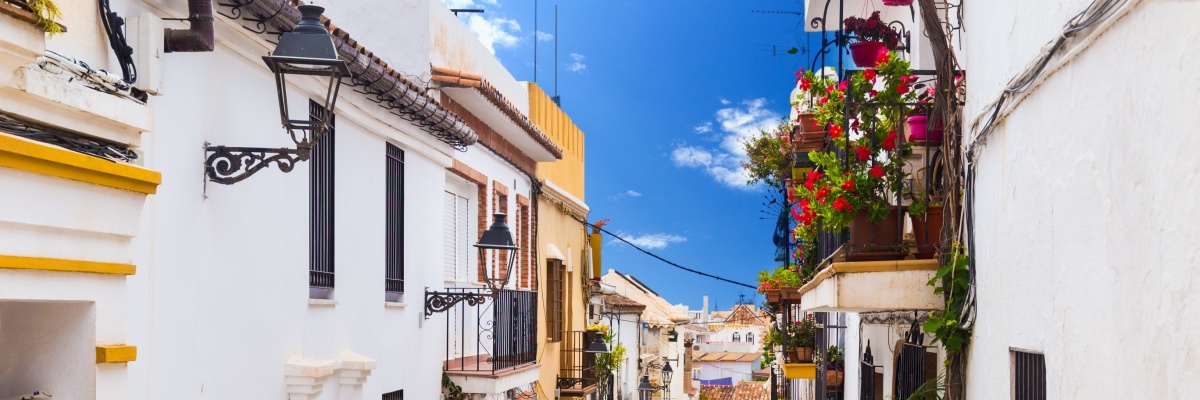
The city of Toledo sits some 75 kilometres to the south of Madrid, the capital of Spain. It is a most picturesque and charming city, perched on a mountain and surrounded by the Tagus river. Its towering walls were first build by the Romans – almost long enough ago to read the Meggilah on the 15th of Adar – whose architectural influence can still be seen in the city. During the early medieval period Toledo served as the capital city. It is the type of place where one is tempted to make the bracha oseh ma'aseh breisheet, acknowledging the beauty of G-d’s creation.
One enters the ancient shul of Toledo, built in the 12th century, noting its beautiful architecture. Unfortunately, having been converted to a church in the 15th century there is little else remaining that indicates it was once a shul
It is likely that this is the shul the Rosh davened at. Rabbeinu Asher ben Yechiel is amongst the most important rabbinic figures in Jewish history. A student of the last of the Tosafists, The Maharam, Rav Meir of Rothenburg he fled from Germany to Spain after his teacher was kidnapped and held for ransom[1]. This was not only a geographical move but a cultural, religious one, moving from the world of Ashkenaz to that of Sepharad. At the time the leading rabbinic figure in Spain was the Rashba, Rav Shlomo ibn Aderet, the rabbi of Barcelona and in 1303 he sent a letter to the community of Toledo urging them to hire the Rosh as their rabbi.
That the community listened says much about the Rashba, the Rosh and the community of Toledo. Most Jews in Toledo likely never had met an Ashkenazic Jew in their lives but that mattered little. The Rosh was “head” and shoulders the best candidate for the position. It was the customs of Toledo that the Rosh would now follow, many of which were quite different from those of Germany. Perhaps the Rosh’s greatest attempt – and failure – to introduce change was his attempt to change the starting date of the insertion of v'ten tal u'matar. This addition to the Shemoneh Esrei is said during the rainy season which in Israel lasts from Sukkot to Pesach.[2]
The Talmud notes that in Bavel, where the rainy season started later, one begins to say v'ten tal u'matar 60 days after the fall equinox. With different rain patterns in Spain, the Rosh wrote a long responsum in which he ruled that the dates for its recital should reflect the reality of Spain and thus it should begin earlier and end later. The Rosh (commentary to Ta'anit 12b) notes with great approval the practice in Provence to begin v'ten tal u'matar in Cheshvan.
Interestingly, the first rabbinic question sent from the New World was whether the dates of v’ten tal u'matar should be modified due the changed seasons of the southern hemisphere. The question sent from Brazil to Amsterdam – where many of those expelled from Spain had settled – received a negative response. While the first official records of Jews in the New World date from 1654, Jews most likely first arrived in the Americas in 1492 leaving Spain on the voyage of Columbus that set sail that same year – and was sponsored by the same Ferdinand and Isabella who expelled the Jews.
How successfully the Rosh adapted to his new cultural milieu I do not quite know. But it appears his children did (kind of like making aliyah). His most famous son, Rav Yaakov ben Asher adopted the style of Sephardim who in addition to writing Talmudic commentaries also composed legal codes. The Ashkenazic practice, best exemplified in the commentaries of Rashi and Tosafot, was to avoid codes and with it the finality of the law. Codes make it easier to know what to do but harder to voice an independent view, something that led many great rabbinic figures to vigorously oppose the writing of codes.
While his father the Rosh wrote a commentary that is printed in every standard edition of the Talmud, the son the Tur followed in the footsteps of his Sephardic predecessors the Rif and the Rambam in composing a code of law, the Arba Turim or the four rows. The name comes from the four rows of stones on the breastplate of the high priest in the Temple. This code served as the template for the most influential code in Jewish history, the Shulchan Aruch of Rav Yosef Karo. Born in Toledo in 1488, he first spent over 20 years composing a “commentary[3]” on the Tur. He then (thankfully) greatly shortened it and composed what is the most concise code of them all, the Shulchan Aruch. Interestingly, while the Shulchan Aruch follows the style of the Tur in deciding what the actual law is, Rav Yosef Karo bases himself on the Rif the Rambam and the Rosh.
[1] Refusing to let the community pay the exorbitant fee to free him, he remained in captivity for the last seven years of his life. (See here for a discussion of this episode in Jewish History.)
[2] In a beautiful and sensitive halacha our Sages ordained that v'ten tal u'matar should not be said until 15 days after Sukkot, so that no one should pray for rain while those who travelled to Jerusalem for Sukkot might still be on their way home.
[3] It is not exactly a commentary, rather it quotes all the sources from the Talmud onwards to clarify how the Tur reached his view, along the way explaining all the dissenting views.

